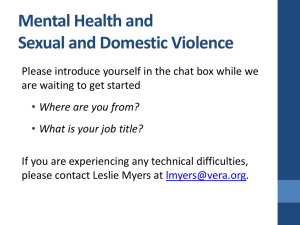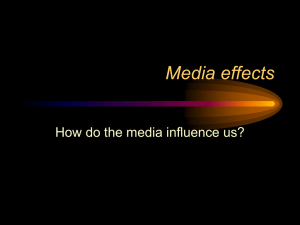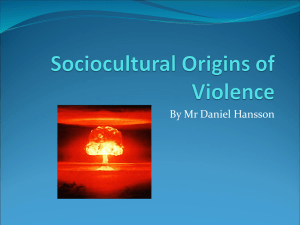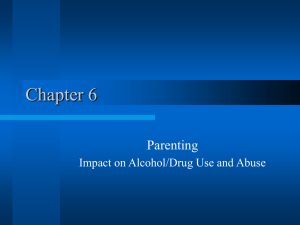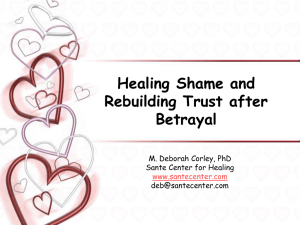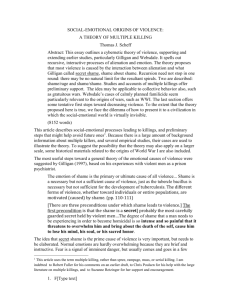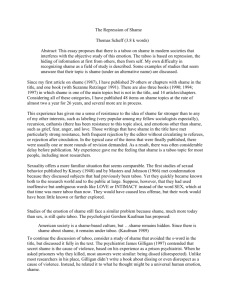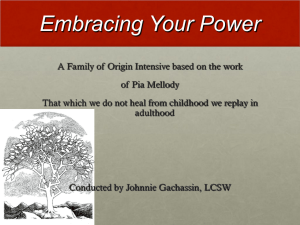Violence Against Women: trauma and recovery
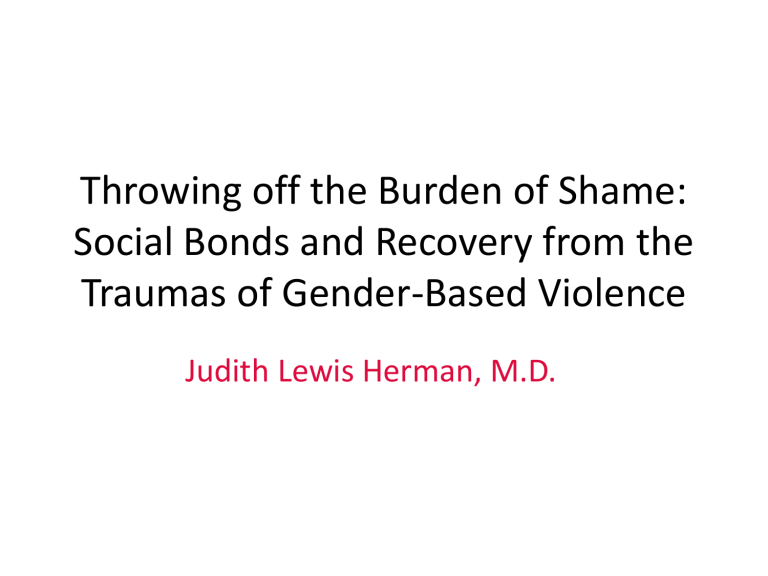
Throwing off the Burden of Shame:
Social Bonds and Recovery from the
Traumas of Gender-Based Violence
Judith Lewis Herman, M.D.
Pinel Liberating the Insane (1795)
Charcot at the Salpetriere (1887)
Women’s Liberation:
Consciousness-Raising (1969)
The Universality of Violence Against
Women
Violence against women is an obstacle to the achievement of the objectives of equality, development and peace. In all societies, to a greater or lesser degree, women and girls are subjected to physical, sexual and psychological abuse that cuts across lines of income, class and culture.
--The United Nations Fourth World Conference on Women
Beijing, China - September 1995
Percent Women Certified by American
Board of Psychiatry and Neurology
Prevalence, Incidence, and Consequences of
Violence Against Women
:
National Violence Against Women Survey
(Tjaden &Thoennes, 1998)
Total Rape
Women
(N= 8000)
Men
(N = 8000)
17.6%
3%
Lifetime Prevalence of PTSD
(Kessler et al, National Comorbidity Survey 1995)
Men 5.0%
Women
Total
10.4%
7.8%
Mental Health Impact of Gender-Based Violence
Australian Mental Health and Well-Being Survey, N=4451
(Rees, et. al, 2011)
Complex PTSD: The “A” Criterion
• Exposure to a traumatic event involving actual or threatened death, serious injury, or threat to physical integrity of the self or others, producing intense fear, humiliation helplessness or horror.
• This exposure is repeated over a period of weeks, months or years.
Social Conditions Producing Prolonged and
Repeated Trauma
• The victim is under the control of the perpetrator and unable to escape.
• The perpetrator uses an array of control techniques, of which violence is only one.
• These techniques break down autonomy and initiative and create a defiled and degraded self-identity in the victim.
Coercive Techniques are Organized to Control and Dominate Victim
Methods of Coercive Control
• Violence and Threat of Violence
• Control of Bodily Functions
• Capricious Enforcement of Petty Rules
• Intermittent Rewards
• Isolation
• Degradation
• Enforced Participation in Atrocities
---Source: Amnesty International Report on Torture, 1973
Rules for Relationships of Coercive Control
• The strong do as they please.
• The weak submit.
• Bystanders seem willfully blind or indifferent.
• There is nowhere to turn for care or protection.
Social Conditions Producing Prolonged and
Repeated Trauma
• Child abuse
• Domestic violence
• Some religious cults
• Human trafficking and prostitution
• Child soldiers
• Slavery
• Torture
• Concentration Camps
Recruiting Women for Prostitution:
Professional Advice from a Pimp
“Beauty, yes. Sexual expertise, somewhat.
That can be taught easier than you think. What is important above all is obedience . And how do you get obedience?
You get women who have had sex with their fathers, their uncles, their brothers---you know, someone they love and fear and do not dare to defy.”
---Richard Kluft, On the Apparent Invisibility of Incest. 1990
Impact of Coercive Control:
Complex PTSD
(Herman, 1992)
•Somatization
•Dissociation
•Affect dysregulation
•Shamed and defiled sense of self
•Disrupted relationships
•Shattered systems of meaning .
Shame as a Relational Experience
Shame is one’s own vicarious experience of the other’s scorn. The self-inthe eyes-of-the-other is the focus of awareness… The experience of shame often occurs in the form of imagery, of looking or being looked at. Shame may also be played out as an internal colloquy, in which the whole self is condemned.
--Helen Block Lewis, 1987
Suicide Attempts
(Dube et al, 2001)
N=17,337
20
15
10
5
0
35
30
25
0 1 2 3 4 5
Adverse Childhood Experiences
6 7+
Odds Ratio
Health Risk Behaviors
(Felitti et. al., ACE Study, 1998)
N=9,508
Childhood Trauma and Personality Disorder
(Herman, Perry, and van der Kolk, 1989)
N=74
Childhood
Trauma
Physical
Abuse
Sexual Abuse
Witnessing
Violence
Total
Trauma
NPD
.05
-.05
.10
.06
SPD
-.02
.15
.04
.06
ASP
.25**
.14
BPD
.48
.40
****
***
.21+ .35
***
.32** .54
****
Implications for Treatment:
Antidotes to Coercive Control
Implications for Treatment: Avoiding Re-enactments
(Karpman’s Drama Triangle)
Rules for Relationships of Mutuality
• Everyone is entitled to respect
• Everyone is entitled to a voice
• Decisions are made by mutual consent
• Power and responsibility are shared
• Relationships are governed by principles of fairness
Adaptive Strategies for Recovery
(Burgess & Holmstrom, 1979)
• Problem-Solving Action
• Affiliative Coping Style
• Mature Defenses: Altruism and Humor
Treatment of Complex PTSD:
ISTSS Expert Clinician Survey
(Cloitre, et. al.: Journal of Traumatic Stress, 2011)
• Phase-Based or Sequenced Psychotherapy
• Initial Focus on Trauma Education
• Anxiety/Stress Management
• Emotion-Regulation Strategies
• Interpersonal Skills
• Narration of Trauma Memory
• Cognitive Restructuring
The Analysis of Shame
Adopting the viewpoint that shame is a normal state which accompanies the breaking of affectional bonds allows shame to take its place as a universal, normal human state of being. Analyzing shame reactions in an atmosphere in which their natural function is taken for granted makes analytic work considerably easier… Perhaps the greatest therapeutic advantage of viewing shame and guilt as affectional bond controls is the emphasis placed on the patients’ efforts to restore their lost attachments .
----- Helen Block Lewis (1981)
Resolution of Shame in Groups
People have at once a sense of their own honour and a respect for other people’s honour; they can feel indignation or other forms of anger when honour is violated, in their own case or someone else’s. These are shared sentiments, and they serve to bind people together in a community of feeling.
----Bernard Williams
Shame and Necessity, 1993
Response to Gender-Based Violence:
35 Years of Feminist Organizing
• Public Education
• Hotlines
• Victim Support Groups
• Shelters and Rape Crisis Centers
• Victim Advocacy
• Research & Professional Education
• Police Training
• Restraining Orders and other Legal Reforms
• Restitution: Victims of Crime Act (1984)
• Community Accountability
• Accountability for Perpetrators
On the Occasion of International Women's Day
"Women and men united to end violence against women and girls”
------Yakin Ertürk, Special Rapporteur on Violence against Women ,
2009
The UN mandate for the elimination of violence against women… reflects the demands, interests and aspirations of women in all parts of the world… It is now firmly acknowledged around the world that violence against women is not an inevitable fate, nor can it be justified or excused by any means. It has also given hope to women in all corners of the world that this pandemic can and must be stopped.



